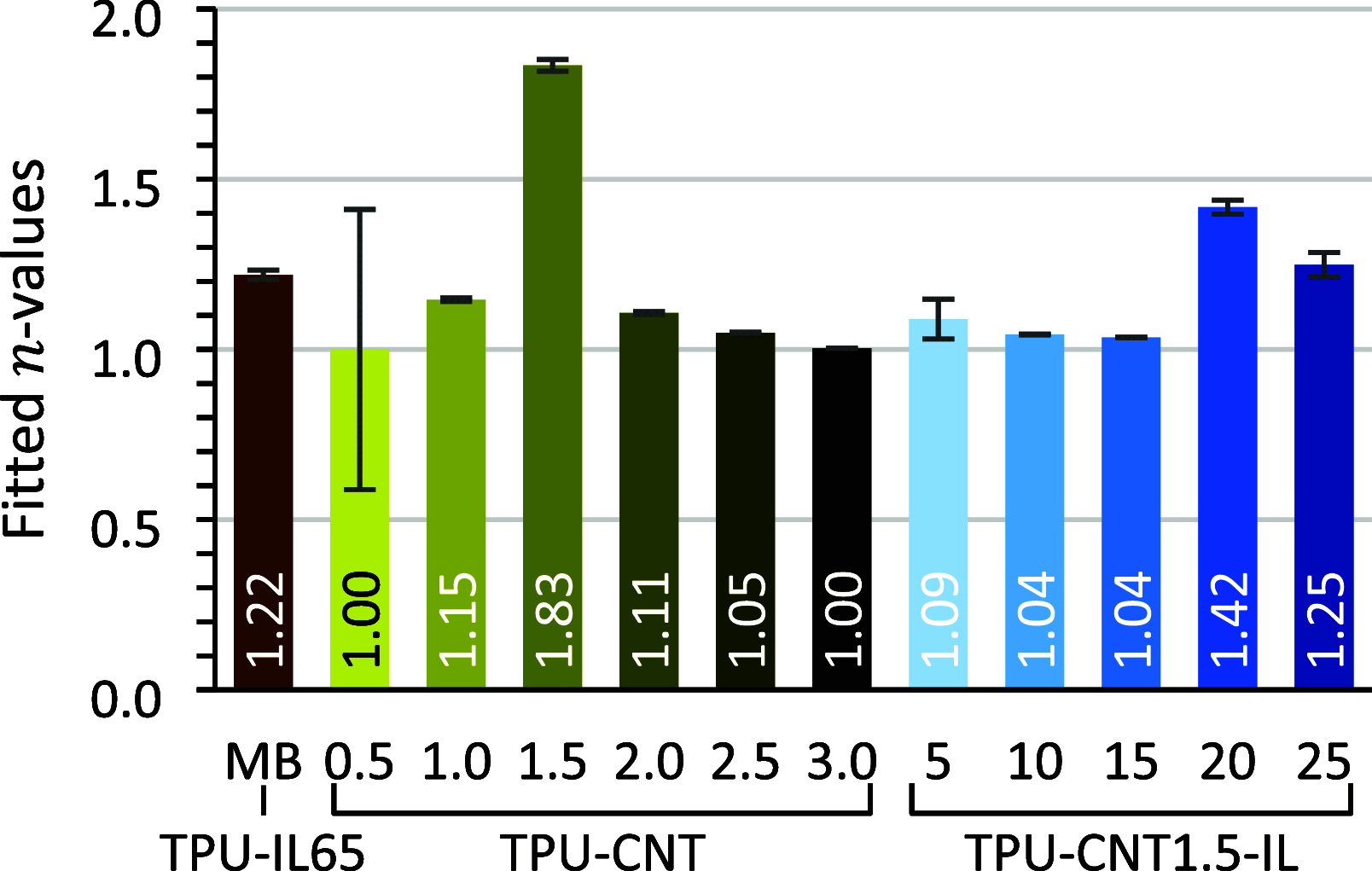Melt Spinning of Thermoplastic Polyurethane-Based Bulk Ionofibers Filled with Carbon Nanotubes
- PMID: 40535828
- PMCID: PMC12172015
- DOI: 10.1021/acsapm.5c00286
Melt Spinning of Thermoplastic Polyurethane-Based Bulk Ionofibers Filled with Carbon Nanotubes
Erratum in
-
Correction to "Melt Spinning of Thermoplastic Polyurethane-Based Bulk Ionofibers Filled with Carbon Nanotubes".ACS Appl Polym Mater. 2025 Jul 23;7(15):10326-10327. doi: 10.1021/acsapm.5c02442. eCollection 2025 Aug 8. ACS Appl Polym Mater. 2025. PMID: 40809106 Free PMC article.
Abstract
Ionotronic textiles or i-textiles offer in-air electrochemical applications and sensing due to their ionic character, mimicking phenomena of organisms. To manufacture different i-textiles with unique functions and characteristics, it is necessary to have a range of ionically conductive textile fibers or ionofibers to choose from. However, their means of production are not sufficiently explored to provide knowledge that meets the fabric manufacturing needs. For a textile application, surface functionalization is usually explored as a convenient way to build upon an already known textile material. In contrast, bulk functionalization allows for superior production rate, versatility, and durability. Additionally, the use of the synergy between ionic liquids and carbon nanotubes is seldom explored. Therefore, in this study, melt spinning is investigated regarding the use of an ionic liquid (IL) initially without and ultimately with multiwalled carbon nanotubes (CNTs) for the tailoring of the electrical and mechanical properties of ionofibers. Based on thermoplastic polyurethane (TPU) elastomers, IL-containing pellets are prepared using 1-ethyl-3-methylimidazolium trifluoromethanesulfonate (EMIm OTf) at different weight ratios. About the melt-spun monofilaments, their extrusion temperatures, their morphology through scanning electron microscopy with energy-dispersive X-ray, their fiber conductivity through electrochemical impedance spectroscopy and cyclic voltammetry, and their tensile properties are investigated. An optimum of the ratios of IL and CNTs is observed for the melt-spinning process, which results in fiber conductivities within the range of 10-2 μS cm dtex-1. Compared to a monofilament melt-spun with no IL and a CNT weight ratio above percolation threshold, the fiber conductivity is twice higher due to its intricate segregated network. Thus, this industrial textile-compatible process offers an alternative within the development of ionotronic fabrics.
Keywords: carbon nanotubes; conductive polymer composites; i-textiles; ionic liquids; melt-spinning; monofilaments.
© 2025 The Authors. Published by American Chemical Society.
Figures








References
-
- Huniade C., Melling D., Vancaeyzeele C., Nguyen G. T.-M., Vidal F., Plesse C., Jager E. W. H., Bashir T., Persson N.-K.. Ionofibers: Ionically Conductive Textile Fibers for Conformal i-Textiles. Adv. Mater. Technol. 2022;7:2101692. doi: 10.1002/admt.202101692. - DOI
-
- Huniade C., Martinez J. G., Mehraeen S., Jager E. W. H., Bashir T., Persson N.. Textile Muscle Fibers Made by and for Continuous Production Using Doped Conducting Polymers. Macromol. Mater. Eng. 2024;309:2400217. doi: 10.1002/mame.202400217. - DOI
-
- Cayla, A. ; Devaux, E. ; Salaün, F. ; Ortega, J. ; Li, S. ; Pursche, F. . 2 Particle fillers for fibers. In: Jean, C. ; Franz, P. eds. Particle Technology and Textiles. Walter de Gruyter GmbH & Co KG: Berlin, Boston, 2023: 13–44.
-
- Kim S. Y., Jee E., Kim J. S., Kim D. H.. Conformable and ionic textiles using sheath-core carbon nanotube microyarns for highly sensitive and reliable pressure sensors. RSC Adv. 2017;7:23820–23826. doi: 10.1039/C7RA02215H. - DOI
-
- Shi X., Zuo Y., Zhai P., Shen J., Yang Y., Gao Z., Liao M., Wu J., Wang J., Xu X., Tong Q., Zhang B., Wang B., Sun X., Zhang L., Pei Q., Jin D., Chen P., Peng H.. Large-area display textiles integrated with functional systems. Nature. 2021;591:240–245. doi: 10.1038/s41586-021-03295-8. - DOI - PubMed
LinkOut - more resources
Full Text Sources

